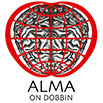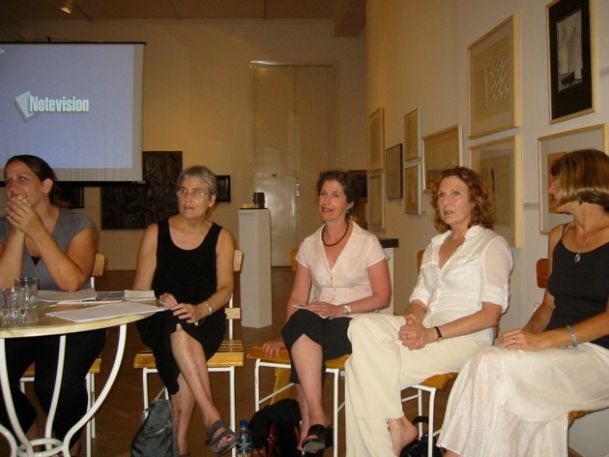
A.I.R. Gallery Talk
Ernst Museum, Budapest
July 10, 2007
The 2B Gallery, with Alma on Dobbin, organized an exhibition recording the history of the AIR Gallery of NYC, along with exhibiting two of their portfolio publications--one from 1976, and the other 30 years later:
As the new year began in 1971, art historian Linda Nochlin wrote an article in the January issue of ArtNews that challenged the art world with a question simmering in feminist artists’ consciousness raising groups and with feminists in the College Art Association: “Why are there no great women artists?” Later that same year, artists Barbara Zucker and Susan Williams, who met in a feminist consciousness raising group and shared studio space, answered the question with clarity and insight: the established gallery world did not provide venues for work made by women. They decided to act by inviting other women artists to create a co-operative gallery that would show work by women. After looking through the Ad Hoc Committee for Women Artists’ slide registry and conducting many studio visits, they established the original group of 20 artists who were to constitute the governing board of this new, independent, not-for-profit gallery, as well as the gallery’s roster of exhibiting artists: Rachel bas-Cohain, Judith Bernstein, Blythe Bohnen, Maude Boltz, Agnes Denes, Loretta Dunkelman, Daria Dorosh, Harmony Hammond, Anne Healy, Laurace James, Nancy Wilson Kitchel, Louise Kramer, Rosemary Mayer, Patsy Norvell, Howardena Pindell, and Nancy Spero. (Daria Dorosh and Louise Kramer are members today.)
The group went on to name the project “A.I.R. Gallery” as a dual reference to its location in SoHo, then characterized by the city-authorized artist-in-residence loft program, and the insistence that women artists “take residence” in a male-defined art world.
Lucy Lippard’s essay for the 1976 print portfolio of the founding artists work expresses some of the challenges inherent in the gallery’s innovative positioning: “A.I.R.’s internal history has been a tempestuous one. At the beginning, there was a certain dissension among the 20 members as to how much the political aspect should be stressed. While all felt that the art came first, some felt [the gallery artists] constantly wrestling with the idealism on which A.I.R. is founded and avariciousness for personal success.”
As A.I.R. looked ahead to its 35th Anniversary in the fall of 2007, the tendency within and without the gallery was to refer to the founding as a transformative and influential event in the history of contemporary art. While this is undeniably the case, and worthy of recognition, in many ways the more startling accomplishment of the gallery is its resilience and continuity over the decades – its unwavering adherence to its core principles.
- (excerpted from Dena Muller's gallery statement, June, 2006)
© ALMA 2014



